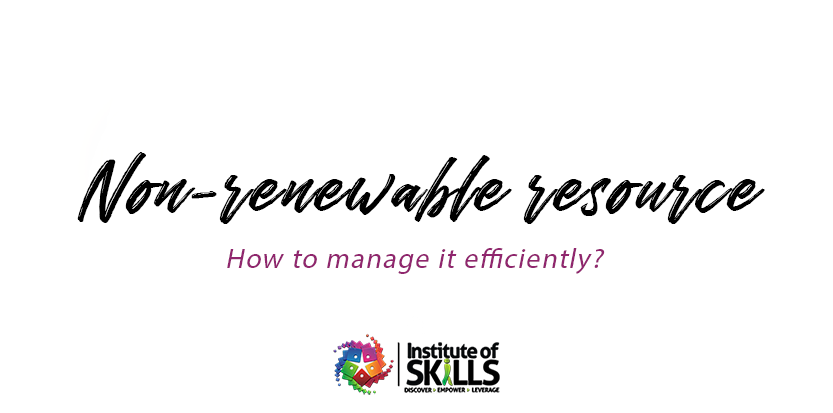- December 7, 2017
- Posted by: Enrichment Catalyst
- Category: Enriching You

Geographical science classes may have taught about the renewable and non-renewable energies and resources. In a world of dependence on non-renewable resources, their usage is something that deserves critical attention before exhaustion but not taken seriously. The impact and aftermath of its exhaustion is gaining a little attention but the solution is not. But, the upcoming content is definitely not about oil, electricity, water or food. It is about something that also needs as much attention as the above mentioned but hasn’t even got the attention towards the impact of its exhaustion.
The important non-renewable resource we are missing out to keep track in our life is “Time”. When we ask employees, they will mostly consider “Money” as the non-renewable resource they should concentrate on. But, the fact is money is actually renewable. Even upon wasting or losing a huge sum of money, there is always a possibility to earn it back. But, when it comes to “time”, irrespective of the person being an employee or student or an entrepreneur, it is “non-renewable”. Financial Management gains a lot of importance that it is even in the curriculum. But time management is not taken care of in spite of the truth that “Time is Money”.
Time once lost is lost forever. So, this part of a non-renewable resource not only needs lot of attention but also “quick” attention. Time Management helps in increasing productivity and to make the fullest use of it. A proper use of time can give tremendous and incredible success results to every young aspirant who will be wondered for his/her multiplicity. Every time when we admire how that person was able to achieve so much in so little time, we need to remember that is it not “so little” time, it was actually a large amount of time organised in a proper way towards achievements. So, time management can undoubtedly help in success and growing with it. Some tips to manage and use time efficiently:
- Make a schedule – People always think only scheduling the works helps in accomplishing the task perfectly. But it’s totally wrong, its scheduling with an action plan that works. Make a weekly schedule as it will help you gauge the tasks and days together and maps the tasks on given days.
- Don’t procrastinate – Procrastination would be an epidemic if ever time wasting was a medical condition. The art of delaying tasks and postponing it to later days/time is procrastination. Not finishing tasks can have stress-bund effect on us. This leads to frustration and lots of incomplete work which tends to discourage us in the next task.
- Make a to-do list – This is definitely not a schedule. Just note down randomly what you want to do. List all your tasks without mentioning the time frame for each. Let it just go on with the flow. Time restriction sometimes happens at the cost of perfection.
- Prioritise – The to-do list has to be re-arranged where priorities are identified and top the list and occupy the day or days. When priorities are taken care of first, all the other works are taken care well in complete relaxation mode and a steady pace.
- Do quality work– The primary reason to have a schedule is to divert quantity work to quality work. Take your own time to finish each task, learn something new if required and “complete” it instead of “finishing” it.
- It is ok to have incomplete tasks– Definitely you will be having incomplete tasks from the day. But, that’s fine because you have already completed your prioritised work, so, nothing to worry. The rest can be the next day’s prioritised work. And finally it’s going to be done.
- Identifying the failure– Following all these steps is not going to show productivity in the first attempt. Definitely, there will be a tremendous waste of time. But, the point is to identify “why”. In spite of following the to-do lists and prioritising work, why were you not able to show productivity? So, check what your prioritised tasks were first. Check the other tasks next. Evaluate the time ratio and priority ratio for each task and see if it’s appropriate. You will know what you missed despite the strict adherence to the steps.
- Re-engineer– Once you have identified the chaotic preferences and priorities in your previous plan, you will automatically identify what are the tasks really important to you and what are those you have deliberately made important without much value just in a drive to multitask. When you decide, which one you want to dive deep into, there is born a new schedule and you are ready to manage your resources.
Of course, it is disappointing to find at the last point that the whole process was a “trial and error” method and didn’t serve spoon feeding. But, identification, affirmation and planning automate the execution and that is how successful executions are designed.
